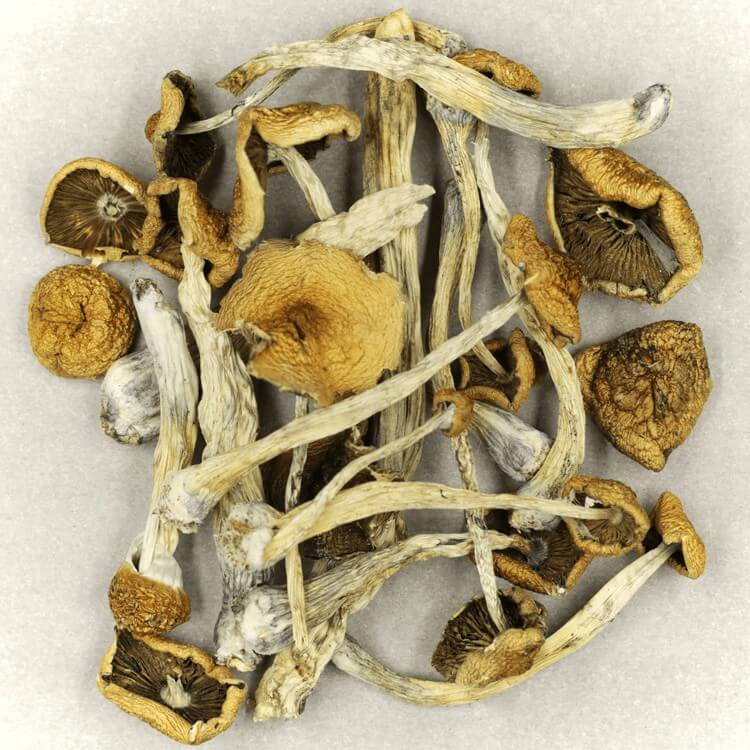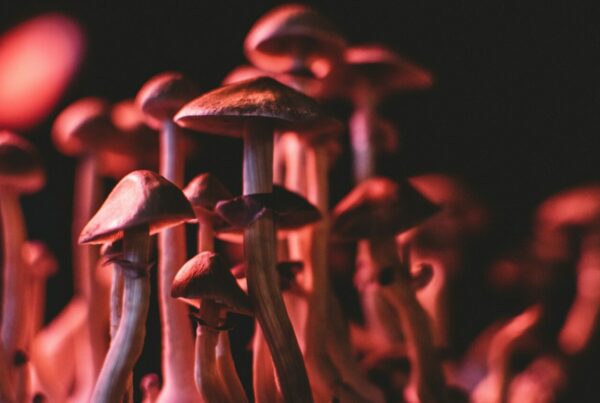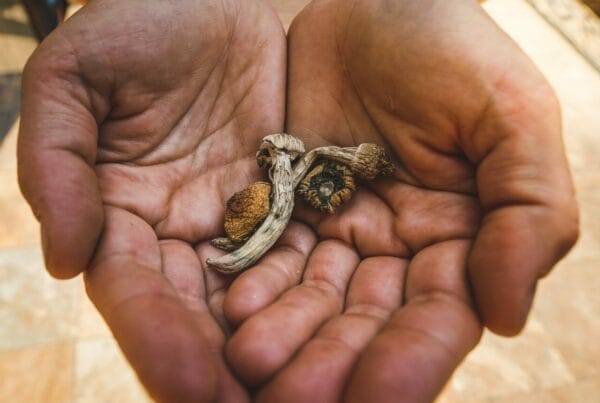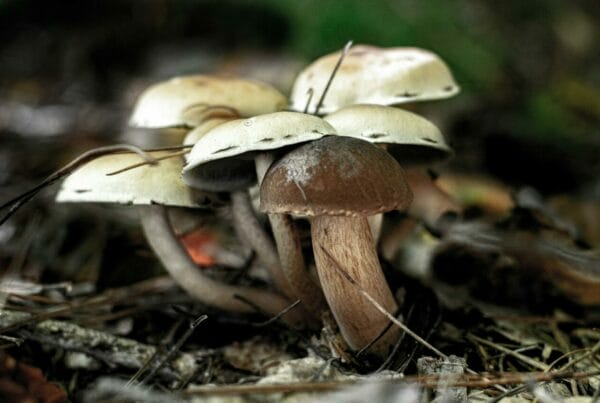Once viewed as mere fantasy, the power of Psilocybe mexicana is now acknowledged due to ongoing psilocybin studies. The psychedelic research sector is regularly revealing its therapeutic advantages, contributing to its acceptance within medical circles. This burgeoning field is seen as promising by professionals working tirelessly to determine safe dosage levels for medicinal use.
Key Takeaways
- Researchers are using advanced techniques like liquid chromatography and tandem mass spectrometry to measure mushroom potency.
- Clinical trials are currently assessing the therapeutic potential of Psilocybe Mexicana and other mushroom varieties.
- Understanding the genetic diversity in magic mushrooms is crucial for creating a precise dosage chart.
Psychedelic Mushrooms: From Anonymity to Research Revelations
While Psilocybe Cubensis was previously known to benefit only a few conditions, psilocybin is now making great strides in uncovering an array of medicinal qualities.
Scientists are leveraging the power of Psilocybe Mexicana and other potent strains for rigorous research and clinical trials. This strain proves effective in delivering the genuine effects and benefits of the fungus species, whether studied in vivo or in vitro.
Psychedelics Making Their Market Debut
Once concealed, now in the spotlight—continuous breakthroughs are attracting public attention, particularly from those seeking effective therapeutic interventions. Traditional treatments for mental health disorders often fall short, leading people to explore more dependable alternatives.
Enter the era of magic mushrooms.
Patients grappling with mental health issues are turning to psilocybin, which has shown potential in treating a variety of conditions such as depression, alcohol dependency, anxiety, compulsive behaviors, tics, chronic pain, and more.
Currently, medical practitioners are investigating novel ways to determine the optimal dosage for safe patient administration. A research team from the University of Texas has notably developed a model to extract psilocybin and psilocin concentrations.
Establishing the clinical potency of magic mushrooms is indeed possible.
Distinctive Traits of Mexicana
There has been extensive study on the Golden Teachers, Blue Meanies, and B-Plus strains. However, for a more comprehensive understanding of safe magic mushroom usage, it’s crucial to investigate other species as well.
The Mexicana strain has gained significant attention in research circles. Not only is it one of the oldest known species, but its relatively low potency also makes it a potential candidate for meeting medical drug standards.
Even though the Mexican strain is less potent than other species, it can still produce effects similar to those of more mainstream strains. As the practice of microdosing mushrooms grows in popularity, this strain becomes an increasingly appealing option.
It contains consistent levels of psilocybin and psilocin, just like other strains. So, what sets it apart? The answer lies in its historical and anthropological importance.
Delving Into A Rich “Mexican” Legacy
Psilocybe mexicana was naturally found growing in moss in ancient times. These psilocybin mushrooms were held in high esteem by indigenous populations, often associated with mystical or supernatural experiences.
Let’s focus on the mushrooms from Mexico. More than 2000 years ago, the initial documented use of these mushrooms was by the indigenous tribes of North and Central America. The Aztecs, an ancient civilization, labeled these mushrooms as the “food of the Gods,” or “teonanácatl” in their language.
Had the Aztecs been around today, they would attest to the transformative, emotionally profound, and mentally balancing effects of the Mexicana strain—even without being familiar with these modern terminologies.
Despite different cultivation techniques, this mushroom has succeeded in retaining its natural psilocybin levels, underscoring its authenticity. This genuineness is highly prized by both researchers and institutions involved in psychedelic research.
Innovative Methods for Evaluating Psilocybin Content and Potency
A team of ten researchers from the University of Texas at Arlington and other institutions have pioneered a new method for assessing the potency of psychoactive compounds in mushrooms. This innovative approach combines liquid chromatography and tandem mass spectrometry.
Here are two ground-breaking techniques:
- Liquid chromatography, a technique that separates and analyzes chemical mixtures, is employed here to scrutinize the active chemicals in mushrooms. The method involves running a liquid sample through a column filled with a solid substance (the stationary phase). The various chemicals in the sample interact differently with the stationary and mobile phases, leading to their separation at different rates as they traverse the column.
- Spectrometry is a study that focuses on the interaction between matter and electromagnetic radiation across a wide range of wavelengths. It identifies and measures substances by observing the specific wavelengths of light that molecules absorb and scatter. This allows the determination of the electronic, rotational, and vibrational states of a chemical.
This method was employed on five different magic mushroom strains. The researchers found that the average total levels of psilocybin and psilocin across these strains ranged from 0.879 to 1.36. These concentrations were higher than many other strains, including Bull Run and Cambodian. They confirmed the accuracy of their study by cross-checking their results with other independent labs.
The alignment of the results between the two labs further supports the reliability of their testing procedure in accurately determining the potency of the mushrooms.
If these findings are validated by experts, it could pave the way for introducing a new set of techniques to the existing psychedelic strength testing methods. This could act as an additional safety measure to prevent incorrect dosage determinations.
Expanding Research to Include Other Species
Including other species in the scope of research is advantageous. It would enhance our comprehension of the health benefits of different strains and provide crucial data on the effects of less potent mushrooms.
Moreover, it would be beneficial in educating people about the effects of different dosages on the psychedelic experience. By comparing strains like Mexicans with more potent ones like Psilocybe Cubensis, researchers can understand how varying concentrations of active compounds can impact therapeutic results.
For example, the Blue Meanies strain, which produces more potent hallucinogenic effects, could potentially be effective in treating conditions like depression. On the other hand, less potent strains are more suitable for microdosing or subtler applications such as mood enhancement or focus improvement.
Diverse Genetics Pave the Way for Safer Treatments
It’s often overlooked that different cultivars or varieties have distinctive genetic profiles and differ in potency, chemical composition, and effects. This diversity allows healthcare providers to select the most fitting type for specific medical applications and adjust doses to individual needs, thereby reducing risks and maximizing benefits.
For instance, species like Psilocybe Semilanceata (Liberty Caps) or Psilocybe cyanescens possess unique alkaloid profiles that may prove effective in managing anxiety. On the other hand, certain synthetically grown mushrooms may be better suited for addressing substance abuse or compulsive behaviors. This variety enables the formulation of personalized treatments that are safer and more effective.
From this, we can infer that the genetic diversity found in hallucinogenic mushrooms, when coupled with novel methods for evaluating potency and identification, is vital for devising safer medical treatments.
Enhanced Safety in Medical Use
Let’s contemplate the potential benefits of safer dosing for a moment.
- Decreased risk of overdosing: With accurate dosing, users can avoid the risk of overdosing. This also suggests that product labels need to be clearer to avoid misinterpretation by consumers.
- Better predictability: With precise dosing, individuals can better predict the effects or experiences they may encounter during their trips. This can mitigate overwhelming sensations and anxiety, thereby enhancing patient satisfaction.
- Uniform measurement: Accurate dosing can encourage a standardized measure, enabling individuals to easily refer to charts for potential effects.
Experience the Benefits of Accurately-dosed Shrooms through Advanced Potency Tests | Buy Magic Mushrooms Online at Shroom Delivery Toronto Canada
If these two revolutionary methods continue, you’ll no longer encounter unpredictable effects. Pair this with smart online shopping at Shroom Delivery Toronto Canada. We offer dried mushrooms that provide a serene, relaxing psychedelic journey without overwhelming psychoactivity. Buy psychedelics online in Canada via Shroom Delivery Toronto Canada.
Frequently Asked Questions
Are Big Mexicans and Psilocybe Cubensis the same?
No, Big Mexicans and Psilocybe Cubensis are distinct mushroom strains and should not be confused. Big Mexicans contain a higher compound concentration, ranging from 0.5% to 1%, making them significantly more potent.
Contrasting Psilocybe Azurescens, Psilocybe Cubensis often exhibits different physical characteristics. For instance, Psilocybe Azurescens usually has a bell-shaped cap, while Psilocybe Cubensis leans towards a conical shape.
What concentration of Mexican mushrooms is considered the maximum?
The concentrations of psilocybin and psilocin in Mexican mushrooms can escalate as high as 0.25%. Despite being considered relatively low, these concentrations are comparable to the Golden Teacher strain. Even at these levels, they can provoke profound psychedelic experiences, potentially leading to health benefits.
What dosage is deemed medically safe?
Usually, a dosage ranging from 1 to 2 grams is recommended. However, this amount can fluctuate depending on several factors including the method of consumption, the individual’s metabolism, and the specific potency of the mushroom strain. Some individuals opt for sub-threshold doses between 0.05 (50mg) to 0.025 grams (250mg) in a bid to mitigate the hallucinogenic impacts.





